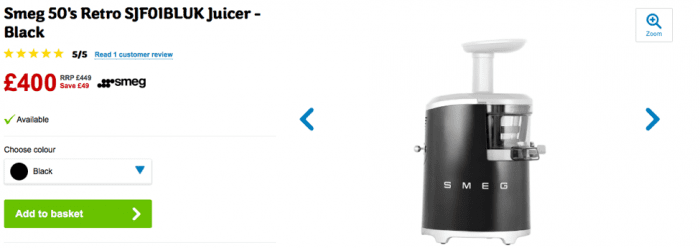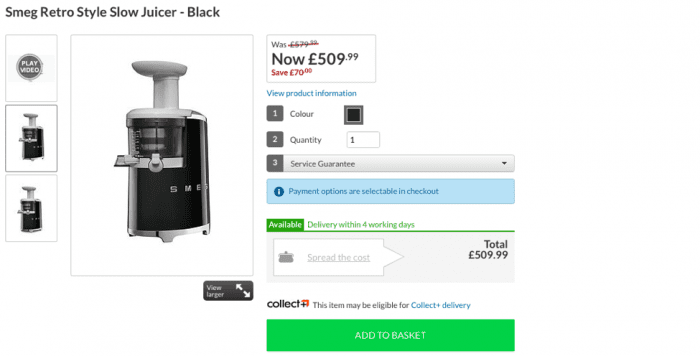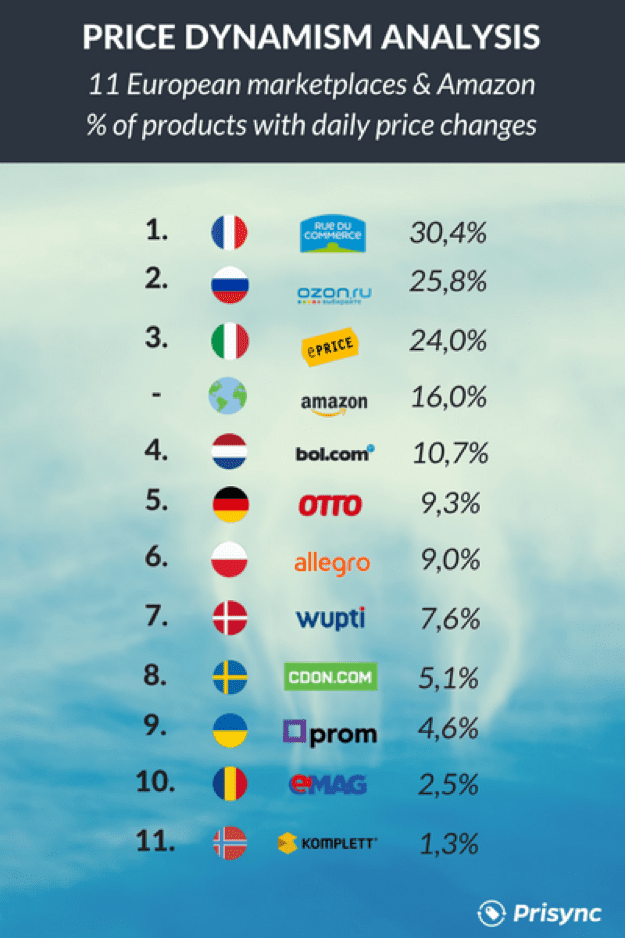Learn How to Boost Your Marketing Return on Investment Performance by Tracking Competitor Prices and Assortments
Ecommerce businesses face very strong competition due to the fact that SMEs have entered into the online world almost as quickly as the biggest companies, such as Amazon or Alibaba, resulting in the existence of millions of e-commerce companies.
This great competition is not just focused on who sells something, but also on the earliest stages of the buying process, like getting customer attention when they are just looking for information prior to buying. Ecommerce competition is one of the best examples of Porter’s framework, since online buying decisions depend on many factors that are hard to control.
In this article, we will explain how pricing affects ecommerce competition and show how to become more competitive by getting smarter about it, in order to boost the ROI your marketing efforts, so you can attract and keep your customers.
Offering Attractive Prices Is Mandatory for Businesses of All Sizes
Any good marketer knows that the key to success is to be able to put himself in the shoes of the public. This is why marketing is so closely related to data analysis. Ideally, a good marketer will merge the information from data with his own experience to understand what the customers are thinking when they are about to buy. And there is one thing in which almost all marketers and customers agree: price matters! And here are the facts to prove it:
- Approximately 25% of e-commerce website traffic comes from comparison shopping tools,
- 90% of online shoppers compare deals on the Internet,
- 6 out of 10 people state that pricing is the top factor in purchasing decisions.
Competitive prices will result in more traffic to your website. If people are researching deals and best prices, and you are offering the best ones, your business will appear at the top of the searches that customers are doing during their research.
Besides, pricing is not just a way to get more visitors by taking advantage of the price comparison engines available online and some sporadic sales, but it is also a way to make visitors loyal shoppers.
And it will improve the performance of other strategies that you may be developing, like pay-per-click advertisements. A common problem of pay-per-click ads is that the customers do click on the ad, but they also look at many other sites, so they end up buying from a competitor, while you have to pay the ad publisher by the click. But if you are offering the best price, this is a far less likely scenario. And your conversion rate when someone clicks on the ad and lands on your page will rise spectacularly.
While being the most competitive one, you don’t have to force your profit margins. There are smart and applicable ways of both being competitive and increasing your margins.
Does it sound like magic?
Your online prices might be too competitive that even %5 or %6 of increase won’t harm your conversion rates and also a competitive advantage. But the tricky point is detecting these opportunities. The most practical way of being aware of these quick opportunities is using competitor pricing intelligence software. With these smart tools, you can easily identify over competitive prices among your competitors and lift up the prices.
Now, let’s go through a real case.
Below, you see two online sellers selling the same juicer. The first retailer, which is offering the best deal, offering the juicer at £400,00. Its closest competitor in the juicer market selling the same product at £509,00. In that scenario, the first online shopper can raise the price just below its competitor by setting it at around £475,00. This decision will bring fattened margins (£75 more out of every juicer sold) that raise up the balance sheet and still let the product be the most competitive in the market. And the best part is coming… As you hold the competitiveness in the market, your conversion rates won’t decrease.


Set Your Prices Dynamically in a Smart Way
At its core, dynamic pricing is a flexible pricing strategy for e-commerce retailers who are competing in a fierce competition in terms of price. With the ability of dynamic pricing, online businesses are able to continuously adjust product prices, sometimes in a matter of minutes, in response to price fluctuations in the competitors and the market.
For example, Amazon is surely the first e-commerce retailer that comes into our mind when we think of price dynamism worldwide. The e-commerce giant changes %16 of product prices in full assortment on a daily basis. Besides of that, we can clearly say that other big players are also adapting dynamic pricing to their strategy as their daily price changes of some of them reach at 24% - 30%. You can see the price dynamism analysis of Amazon vs. European Marketplaces from the image at below.

A proper and sustainable way to boost the performance of your dynamic pricing is setting the optimal prices based on specific pricing rules set by the retailer. Price intelligence tools can generate smart prices according to your costs, margins and your competitors’ prices. After gathering your smart price for every single of product or category, you are able to take the initial steps to adapt your pricing strategy to dynamic pricing and reprice your prices continuously. As a result, you can better compete with e-commerce giants like Amazon. Also in that way, you set your prices in a smart way instead of just guessing.
To effectively work with the turnover of products, retailers need to use different scenarios (algorithms, rules) for repricing. This is the main focus of this idea.
So let’s go through a real example. Think about a scenario that, you aim the most competitive in the market but not go below of your costs.

You can multiply these types of scenarios and set appropriate rules according to your strategies.
Make Your Marketing Strategies Cohesive With Your Pricing Competitiveness
Following with the idea stated in the section above, you can utilise the advantage of competitive pricing intelligence by making your marketing strategies cohesive with your pricing competitiveness. This doesn’t necessarily mean that you have to lower your prices...actually, there are other pricing strategies. But you can improve your marketing performance with a better understanding of how customers see your products. Just follow these steps:
- Check which products of yours already have a good competitive pricing in the market.
- Check your marketing budget and see in which products’ advertisements you are investing more money.
- Do 1 and 2 have the same answer? They should.
Online advertisements may be much more profitable if instead of focusing on sales, you make your objective broader to get visitors - and also sales. If you focus only on sales, you will try to sell everything. If you also take a look at getting visitors, you will focus on advertising that your products are competitively priced, because that will bring more visitors to your site, and as stated before, the visits will have a higher conversion rate, with more customers buying more products in your e-shop.
Therefore, by just focusing your promotions on your most competitive products, you will improve your ROI without compromising on any margin cuts.
Similarly, you may notice that you are investing a large amount of money in promoting a group of products, which are not priced competitively. If that is the case, just finish this advertisement campaign that is just giving you visitors. We all browse several competitors at the same time to compare their prices and get the best one. If your prices aren't competitive you'll just get a state of your own medicine.

Product Assortment Is Also Important
Information is the key in e-commerce for both sellers and buyers, but not all buyers look for the same thing. While some buyers have a clear product in mind, others compare different brands before buying.
This is why assortment planning is also very important for e-commerce success. Ideally, you would know what the most popular products are and offer them at great prices to attract visitors. But it is not just to offer them a proper price, but also the availability. It is important that they never find your business without stock. You may have the best price in the market, but if you don’t have stock you will lose the sale.
On the other hand, it would be great if you could be aware of the times when your competitors are out of stock, because this would be an opportunity to raise your conversion rates, margins or both.
For example, imagine that your competitors are out of stock in a popular category. This is a great chance to make a special investment in advertisements, and as customers won’t be able to find it on your competitors’ websites, they will continue researching and will likely end up on your website making the purchase. Again you will be improving your conversion rate and making a clever investment.
In this situation, another option you may consider is to raise your prices so as to get higher margins for each conversion, since the users will not find the products in the other companies and yours will be the chosen one.
Also, by monitoring competitors’ assortments, you can learn about the new products, brands or categories becoming popular and then start to add those into your e-commerce supply.
By comparing your assortment with competitors’ e-commerce businesses, you will learn a lot about the market that will allow you to be in stock with the highest demand products and position your business as a shop that never disappoints its users.
Businesses of All Sizes Can Use Automated Price Tracking Intelligence And Assortment Monitoring
The Internet has created the most competitive market in the history of commerce, with businesses all around the world offering their products, and customers easily getting all the information they need from search engines. Keep in mind that information is not the enemy, but the solution. Technology has also developed tools for people trying to sell.
Traditionally, companies gathered data with human workers and a great amount of paper. But now we are talking about global data, meaning e-commerce businesses need to track information worldwide. Luckily, information is publicly available online, and the only problem is the time it would take a human to collect it. Imagine how many workers you would need working full-time to be aware of your competitors’ pricing and product assortment for each reference in your business. Even if you limit your tracking to your 200 best-selling products, and your competitors to 15 businesses, you would need to check the price in 3000 pages, and then you would need to find out if they have stock!
But this can be done automatically. Prisync has solid expertise in delivering competitive pricing and assortment intelligence and offers a service for the full automation of this data gathering process for e-commerce companies of all sizes with different pricing plans for every need, so all sizes of companies can afford this intelligence and boost their marketing investment ROI as explained in this article.

Thanks to
Burc for sharing their advice and opinions in this post. Burc Tanir is the CEO of
Prisync, the competitor price tracking software for all sizes of e-commerce companies from all around. He loves to share his thoughts on e-commerce growth strategies, especially pricing strategies on Prisync Blog and also other major blogs.








 Thanks to
Thanks to 



